Table of contents
Many of the potatoes ( Solanum tuberosum) grown around the world are white or cream-colored. They are only edible raw in small quantities. They are healthiest in organic quality. In this article we focus primarily on waxy white potato varieties.
Use in the kitchen
The potato with white or light flesh is versatile and can be found on plates practically all over the world. Potato varieties are divided into different cooking types based on their cooking behavior. These differ primarily in the starch content. This depends on the variety, weather and ripeness. A different cooking type should be chosen depending on the intended use:
- Waxy potatoes have a rather moist flesh and are usually long or oval in shape. They are harvested earlier than floury potatoes. The starch content is rather low at around 11-13%, which means that the skin remains intact during the cooking process and does not burst. Waxy potatoes include Allians, Belana, Goldmarie or Princess. These varieties are ideal for preparing potato salad, gratin, fried potatoes, boiled potatoes or jacket potatoes. 1
- Most waxy potatoes, on the other hand, have a starch content of around (13-15%) and are therefore average. They are suitable for many recipes. Well-known varieties include Gala, Marabel, Milva or Toscana. These tubers can be used to make mashed potatoes, fried potatoes, boiled potatoes, jacket potatoes or baked potatoes. 1
- Floury potatoes almost fall apart after cooking and have the highest starch content: between 14 and 16%. Popular varieties include Adretta, Gunda, Lilly and Russet. 2 They can be used to make dishes such as mashed potatoes, dumplings and gnocchi. They are also suitable for soups and stews. 1
For dishes such as fried potatoes, gratins, rösti, baked potatoes or stews, you can use both raw and boiled white potatoes as a base. However, for potato salad or soups, you have to pre-cook them first to make the recipe work. Depending on the potato dish you choose, a different spice is recommended to bring out the flavour. Strong flavours from fresh herbs such as rosemary or thyme are suitable for the oven or grill. For a sweet version, potatoes harmonise with the taste of the vanilla pod.
If potatoes have green spots, remove them generously before cooking, as these indicate a higher solanine content. The alkaloid solanine is mainly found in such green spots and in the skin. It is less concentrated in the flesh. 3,4 If the tubers taste bitter, please throw them away. We generally recommend preparing the potatoes with the skin on and only cooking or steaming them gently to keep the loss of nutrients to a minimum. In addition, the energy intake remains lower than when preparing them with fat. Solanine is heat-resistant but water-soluble. So some of it passes into the cooking water, which you should dispose of after cooking. 3,14
When cooking at high temperatures of over 120 °C (frying or roasting), the Maillard reaction produces the toxic substance acrylamide. 5 This can be reduced by using potatoes with a lower starch content (mainly waxy potatoes), by using potatoes that are specifically labeled for high temperatures, by storing them properly or, best of all, by using a gentler method of cooking. Please note: the darker the crust, the more acrylamide has developed. 6
Raw potatoes are only digestible in small quantities, unless you press them to make potato juice. You can find out more about this topic in the ingredient: Potato, pulp and peel, raw (organic).
Vegan recipe for potato gratin with white potatoes
Ingredients (for 4 people): 1.2 kg light potatoes (mainly waxy; organic), 1 garlic clove (peeled and halved), 2-3 tbsp rapeseed oil (refined), 200 ml oat cream, 200 ml oat milk, nutmeg, salt,pepper, thyme leaves and/or rosemary needles (chopped).
Preparation: Preheat the oven to 170 °C top and bottom heat. Rub a heat-resistant casserole dish measuring 25x20 cm evenly with half a clove of garlic. Press the other half through the garlic press or chop finely. Then rub in rapeseed oil. Peel the potatoes and cut into thin slices (1-2 mm). If the slices are thicker, the baking time will be longer. Layer the potato slices in a fan shape on top of each other in the casserole dish. Add a little salt in between. Mix the oat cream, oat milk, grated nutmeg, pressed garlic clove and herbs in a bowl and pour over the layered potatoes. Wet the baking paper under running water and pack it over the skins to fit. Put the casserole dish in the oven and bake for 20 minutes. Then remove the baking paper and bake for another 30 minutes. Make sure the potatoes are golden yellow. After 50 minutes of baking, use a wooden skewer to test whether the potatoes are done. If not, bake for another 10 minutes - add more baking paper if necessary. Enjoy your vegan potato gratin straight away.
Vegan recipe for potato salad with white potatoes
Ingredients (for 4 people): 1 kg light potatoes (mainly waxy; organic), 2 bunches (approx. 40 g) herbs (e.g. chives, parsley, dill), 5 gherkins and 5-10 tablespoons cucumber water (depending on taste), 4 tablespoons white almond butter, 1 teaspoon medium-hot mustard, salt,pepper.
Preparation: Cook the potatoes with their skins on either in a pressure cooker (approx. 10 minutes on level 1) or in salted water (approx. 20 minutes) until soft. Drain the cooking water, rinse the potatoes in cold water (makes peeling easier) and leave to cool. Finely dice the cucumber. Wash the herbs, shake dry and chop finely. Set some aside for decoration. Mix the almond puree with the cucumber water and the mustard to make a creamy sauce. Peel the potatoes while they are still warm and cut into equal-sized pieces. Now carefully mix the potatoes with the creamy sauce, the fresh herbs and the diced cucumber. If the salad is still too dry, you can add more cucumber water or oat milk. Season to taste with salt and pepper. Finally, sprinkle the vegan potato salad with the herbs you set aside and serve.
Vegan recipes with white, predominantly waxy potatoes can be found under the note: " Recipes that use the most of this ingredient ".
| Not only vegans or vegetarians should read this: Vegans often eat unhealthily. Avoidable nutritional mistakes. |
Purchasing - Storage
At major retailers such as Coop, Migros, Denner, Volg, Spar, Aldi, Lidl, Rewe, Edeka, Hofer, Billa as well as in organic supermarkets such as Denn's Biomarkt and Alnatura you will find mainly waxy potatoes with white flesh regardless of the season. Organic potatoes are part of the range in most regular shops.
What makes a difference seasonally is the choice of variety. At the weekly market, the variety of potato varieties is often surprisingly large and you can buy small quantities to try out. Retailers must indicate on the packaging which cooking type the white potato on offer is assigned to or put it on the sales sign. Early varieties go on sale from the beginning of June. They need 90 to 120 days of growing time and are characterized by a thin skin (can be used up quickly). This is why they are often available in small units. As a rule, retailers offer the larger bags of 2.5 kg or more again as soon as the longer-lasting tubers are available. The medium varieties, also known as cellar potatoes or storage potatoes, go on sale from August. When buying the tubers, make sure that they look fresh and crisp and are not soft or shriveled. They should not have any green spots or sprouts.
The availability of mainly waxy white potatoes varies depending on the size of the store, catchment area, etc. You can find our recorded food prices for the DA-CH countries above under the ingredient image - and by clicking you can see their development at various suppliers.
Storage tips
Store potatoes in a dark, dry place with sufficient ventilation or in a bag made of natural, airy material such as jute or linen. A room temperature of between 4 and max. 8 °C is ideal. At storage temperatures below 4 °C, the starch turns into sugar, which affects the taste. Modern households usually have limited storage space and temperatures are unsuitable for storing potatoes. Even in the cellar, it is hardly cooler than 16 °C. For information on other storage options, please see the ingredient: Potato, pulp and peel, raw (organic).
Ingredients - Nutritional values - Calories
100 g of white, mainly waxy potatoes (organic?) provide 69 kcal of energy. This includes 0.1 g of fat, 16 g of carbohydrates and 1.7 g of protein. 7 It should be noted that the ingredients listed below are sometimes significantly reduced by cooking and heating the potatoes.
The potassium content is 407 mg/100g. This covers 20% of the daily requirement. Wild rice has similarly high amounts (427 mg/100g). Dried herbs such as tarragon (3020 mg/100g) and parsley (2683 mg/100g) contain particularly high amounts of potassium, although we usually only eat small amounts of these. 7
Vitamin B6 (pyridoxine) is present in white potatoes at 0.2 mg/100g (15% of the daily requirement). A similar amount of the vitamin is found in sweet potatoes (0.21 mg/100g) and whole grain macaroni (0.22 mg/100g). Cayenne pepper (2.4 mg/100g) and hot paprika powder (2.1 mg/100g) contain particularly high amounts of vitamin B6, although these are also consumed in comparatively small amounts. 7
100 g of potatoes, white inside, contain 9.1 mg of vitamin C (11% of the daily requirement). Sweet potatoes, by comparison, only contain 2.4 mg/100g. Cassava, on the other hand, contains more than twice as much vitamin C (21 mg/100g). 7 It should be noted that the vitamin is very sensitive to heat and dissolves in water. However, a healthy, varied diet based mainly on plant-based foods such as vegetables, fruit and whole grain products will provide you with a good supply of vitamin C.
Potatoes are rich in secondary plant compounds such as phenols, flavonoids, polyamines and carotenoids. Various factors such as genotype, agronomic factors, post-harvest storage, cooking methods and processing conditions influence the concentration and stability of these compounds. 8
The complete ingredients of white waxy potatoes, the coverage of the daily requirement and comparison values with other ingredients can be found in our nutrient tables. In the article Nutrients explained you will get a detailed insight into the topic.
Effects on health
How healthy is the potato? The variety of ways in which potatoes are prepared varies, and so does their health value. As chips, fried potatoes or deep-fried croquettes, they are considered unhealthy side dishes due to their high fat content. In addition, high temperatures are used to prepare them in order to obtain a crust. This creates the toxic substance acrylamide.
However, when prepared in a different way, potatoes add value as a nutritional supplement for gastrointestinal problems such as hyperacidity, gastritis, stomach ulcers, gastric prolapse or nervous stomach. 9 Are potatoes good for the intestines? Due to their low fat and protein content, potatoes are good for filling up without putting a strain on the digestive system. Like rice, potatoes are considered to be low in allergens and irritants, which makes them a neutral energy source for non-specific food allergies. 10 Their alkaline properties neutralize acids in the stomach as well as in the blood and urine. Potatoes help to eliminate toxins and are therefore ideal for kidney diseases. 9
Starch is the main energy source in the potato tuber and consists of the two polysaccharides (complex sugars) amylose and amylopectin. 11 When cooked potatoes cool, the starch is converted into resistant starch. 12 Resistant starch is particularly interesting for human health because it is resistant to enzymatic digestion and reaches the large intestine either unchanged or slightly modified, which is why it is classified as dietary fiber. Resistant starch has a prebiotic, laxative, hypocholesterolemic and hypoglycemic effect and helps reduce the risk of ulcerative colitis (chronic inflammation of the large intestine) and colon cancer. 13
When applied externally, potatoes are used in the form of potato compresses for coughs, eye compresses for irritated or strained eyes, or heat compresses for circulation problems or tired legs. You can find out more about this and other health topics under the ingredient: Potato, pulp and peel, raw (organic).
Secondary plant substances
Although potatoes contain secondary plant substances, their nutritional added value lies primarily in the starch and biologically valuable protein they contain.
The content of phenols, carotenoids and anthocyanins is relatively low compared to other fruits and vegetables. Studies also disagree on how preparation methods affect the content of secondary plant substances. Both increases and decreases have been observed compared to the raw form. 24
Dangers - Intolerances - Side effects
The formation of acrylamide through high heat is known as the Maillard reaction. The discovery of this substance has led to authorities in various countries making efforts to reduce the amount of this substance, which is believed to be carcinogenic, in food. This project includes extensive information as well as adapted ready-made products. 5 By labelling potatoes accordingly, it is clear which type of preparation they should be used for. This should reduce the risk of acrylamide causing health problems in the population. 6
The glycoalkaolides α-solanine and α-chaconine contained in potatoes can lead to symptoms of poisoning if consumed in large quantities. In 2018, the German Federal Institute for Risk Assessment ( BfR) therefore recommended a maximum intake of 0.5 mg of glycoalkaloids per kg of body weight. Newer varieties have a lower solanine content. The amount of glycoalkaloids contained can be significantly reduced by storing them correctly or cutting out green areas. 14
You can find more information about these aspects in the ingredient: Potato, pulp and peel, raw (organic).
Ecological footprint - animal welfare
The CO 2 footprint is primarily used to assess the climate friendliness of a food. This depends on various factors. The type of agricultural production (conventional vs. organic), seasonal, regional or domestic production or import by truck, ship or plane, different types of packaging and whether the goods are fresh or frozen all play a decisive role. 15
1 kg of fresh potatoes (organic and conventional), regardless of their starch content, has a CO 2 footprint of between 0.2 and 0.39 kg CO 2 eq/kg. 15,16 The amount of water required to produce 1 kg of potatoes is 287 litres. 17
When you look at land use, potatoes are doing well. Around 0.06 hectares of land are needed per tonne. For the same amount, rice needs 0.24 hectares and wheat even 0.35 hectares. Water use is also significantly higher for rice than for potatoes or wheat. Potatoes store a large amount of water and ultimately leave a significantly lower carbon footprint than wheat and rice. 18
For detailed explanations of various sustainability indicators (such as ecological footprint, CO2 footprint, water footprint), see our article: What does the ecological footprint mean?.
Animal protection - species protection
With the slogan 'Diversity for all', the association ProSpecieRara in Switzerland is fighting to ensure that old varieties are not lost and that the variety of species is preserved. 19
Scientists are working non-stop to bring new potato varieties onto the market that promise positive properties for consumers and agriculture. These include resistance to pests such as the Colorado potato beetle or fungal infestation, late blight, which often leads to major crop losses, or tuber rot. For consumers, potatoes should, among other things, produce less acrylamide when heated and stay fresh longer - without developing a brown discoloration after peeling. Scientists achieve this through genetic modification. It has now been possible to design these in such a way that no new genetic material can be detected in the new potato variety. As a result, it is no longer considered a genetically modified organism (GMO) and no longer has to be labeled accordingly in many countries. 20
Worldwide occurrence - cultivation
Potatoes originally come from the Andean region, where they have been cultivated as a staple food for over 7,000 years. According to studies, their area of origin is in what is now southern Peru. The crop was introduced to Europe in the 16th century. Its worldwide distribution makes it the fourth most used food crop after wheat, rice and corn. 21
Although native to the Andean regions of Chile, Bolivia and Peru, S. tuberosum is now cultivated worldwide. In 2022, China, India, Ukraine, Russia, the USA, Germany, Bangladesh, France, Pakistan and the Netherlands were among the top 10 potato producing countries. 22
Information on cultivation and harvesting as well as growing in your own garden can be found under the ingredient: Potato, pulp and peel, raw (organic).
Found in the wild
There are currently 151 known species of wild potatoes. These inedible species are the original ancestors of today's cultivated potatoes. Wild species are found from the southwestern United States to southern Chile, most in Peru and Bolivia. They grow seasonally in a wide variety of soils and climates, from the dry desert along the Peruvian coast to the valleys of the Andes at altitudes of up to 4200 meters above sea level. 23
It does happen that forgotten or left-over potatoes in fields or gardens continue to reproduce wildly via the tubers; however, these remain cultivated, bred potatoes for consumption (not wild in the true sense of the word).
Further information
Potatoes ( Solanum tuberosum) belong to the plant genus Solanum in the nightshade family (Solanaceae). There are around 1400 species in this category. Well-known crops besides potatoes are tomatoes, peppers (peppers) and eggplants. Many nightshades are unsuitable for human consumption due to their poisonous alkaloids (such as solanine). Although potatoes are starchy plants (similar to fruit or some vegetables) and are prepared in a similar way to grains, they are neither vegetables nor fruit or grains. Despite their similar names, sweet potatoes are no more related to them than Jerusalem artichokes.
Alternative names
Potatoes are also known as Erdäpfel, Erdbirken, Grumbeeren, Grundbirken or Potaten. Outside Switzerland they are also called white potatoes. The English name is potato or potatoes (plural). In Italy, however, the tuber is called patata.
Bibliography - 24 Sources
| 1. | Die Kartoffel de: Von mehlig bis fest: die unterschiedlichen Kochtypen. 2016. |
| 2. | Schwärzel R, Torche JM et al. Schweizer Sortenliste für Kartoffeln 2021. Agroscope Transfer. 2020;362:1–6. |
| 3. | BfR Bundesinstitut für Risikobewertung. Fragen und Antworten zu Solanin (Glykoalkaloiden) in Kartoffeln. 2018. |
| 4. | Omayio DG, Abong GO, Okoth MW. A review of occurrence of glycoalkaloids in potato and potato products. Current Research in Nutrition and Food Science Journal. 2016;4(3):195–202. |
| 5. | efsa Europäische Behörde für Lebensmittelsicherheit. Acrylamid. |
| 6. | BLV Bundesamt für Lebensmittelsicherheit und Veterinärwesen. Acrylamid. |
| 7. | USDA United States Departement of Agriculture. |
| 8. | Ezekiel R, Singh N, Sharma S, Kaur A. Beneficial phytochemicals in potato—A review. Food Research International. 2013;50(2):487–496. |
| 9. | Pamplona Roger JD. Heilkräfte der Nahrung. Ein Praxishandbuch. Zürich: Advent - Verlag Zürich; 2006. |
| 10. | Eichhorn J, Nahrungsmittelallergie, Nahrungsmittelunverträglichkeit (Histaminose), Laktoseunverträglichkeit - Fruktoseunverträglichkeit. 2023. |
| 11. | Xu J, Li Y et al. Functional food based on potato. Foods. 2023;12(11):2145. |
| 12. | Chemie de: Ballaststoff. |
| 13. | Tacer-Caba Z, Nilufer-Erdil D. Resistant starch. In: Melton L, Shahidi F, Varelis P, Hrsg. Encyclopedia of Food Chemistry. Elsevier; 2019: 571–575. |
| 14. | BfR Bundesinstitut für Risikobewertung: Speisekartoffeln sollten niedrige Gehalte an Glykoalkaloiden (Solanin) enthalten. Stellungnahme Nr. 010/2018 vom 23. April 2018. |
| 15. | Reinhardt G, Gärtner S, Wagner T. Ökologische Fussabdrücke von Lebensmitteln und Gerichten in Deutschland. IFEU Institut für Energie- und Umweltforschung Heidelberg. 2020:1-22. |
| 16. | Concito. Denmark's green think tank. The big Climate Database. Version 1.1. Potato. 2024. |
| 17. | Mekonnen MM, Hoekstra AY. The green, blue and grey water footprint of crops and derived crop products. Hydrol. Earth Syst. Sci. 2011;15:1577-1600. |
| 18. | Robertson T, Alzaabi A et al. Starchy carbohydrates in a healthy diet: the role of the humble potato. Nutrients. 2018;10(11):1764. |
| 19. | Pini U. Das Bio-Food-Handbuch. Hamburg, Potsdam: Ullmann; 2014. |
| 20. | Transgen de: Neue Kartoffeln: Weniger Acrylamid, keine Braunfärbung - und auch noch krankheitsresistent. 2021. |
| 21. | Haverkort AJ, de Ruijter FJ. Worldwide Sustainability Hotspots in Potato Cultivation. 1. Identification and Mapping. Potato Research. 2013;56:343–353. |
| 22. | FAO Food and Agriculture Organization of the United Nations. Crops and livestock products. Potatoes. Production Quantity 2022. |
| 23. | CIP International Potato Center. Potato. |
| 24. | Tian J, Chen J. Health benefits of the potato affected by domestic cooking: A review. Food Chemistry. 2016;202:165–175. |

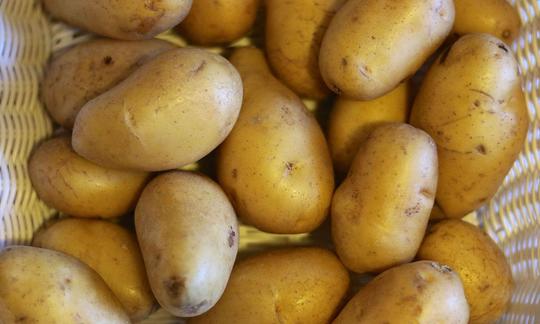

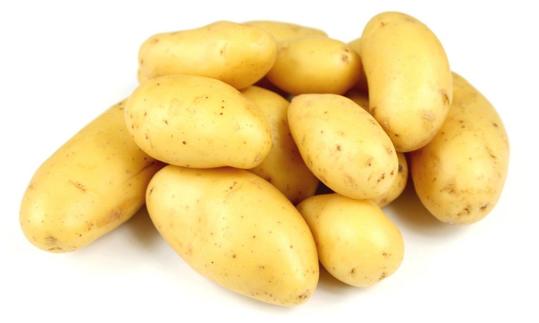

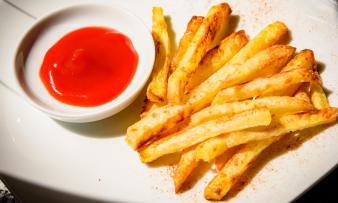
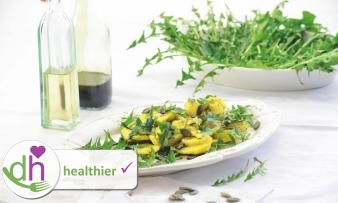
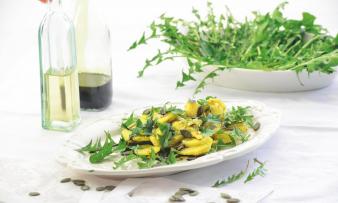





Comments